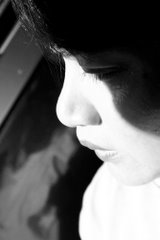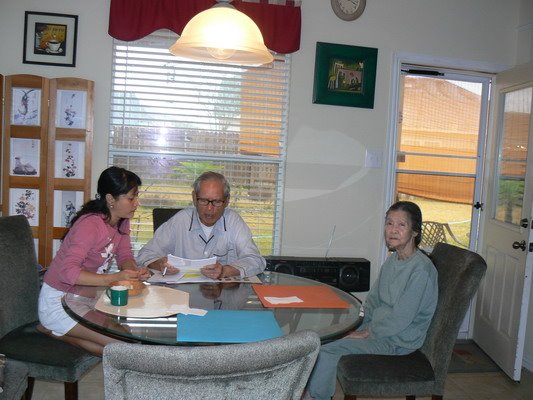
Let’s look at the way Asians handle chopsticks. They always wrap chopsticks in a bunch before dividing them into pairs for use. The way people look at Asian Americans is the same. People often “believe” that an Asian American must have the characteristics of the group he/she belongs to. Such a “belief” is called stereotype which could be either negative or positive. It is necessary to understand that these “myths” are not always correct, and therefore, to find a proper way of treating Asian Americans as independent individuals rather than unidentifiable members of a group.
Stereotypes of Asian American are both negative and positive. In late 1840s, when the first group of Chinese laborers came to the U.S to explore gold mines in California, so did the first negative stereotype of Asian Americans: “Asian Americans are nothing more than starving masses, beast of burden, depraved heathens, and opium addicts” (Abreu, Ramirez, Kim and Haddy 694). Through this negative stereotype, the U.S Government dehumanized Asian Americans including not only Chinese but also Japanese immigrants. While the Chinese Exclusive Act was passed to ban Chinese laborers to immigrate to the U.S, a state law was issued in 1913 to prevent Japanese immigrants to own lands in the United States. The U.S government wrongly believed that all Japanese Americans should not be allowed to own properties in the U.S because they were foreigners and would remain so forever. Because of the negative stereotype of that time, Asian Americans obviously suffered from prejudice, discrimination and violence. Then, in the mid 1960s, the previous negative image of Asian Americans turned positive. People started to describe Asian Americans as “the successful model minority.” In the light of this new description, Asian Americans became immune to cultural conflicts as well as discrimination and reached higher levels of achievement than other races in the US.
Stereotypes of Asian Americans, both in the past and in the present, have proved to be myths. In the past, is it true that all Chinese Americans were addicted to opium? The answer is no! No poor Chinese Americans dared touch the reddish-brown heavy-scented addictive drug, simply because they could not afford it. Is it true that Japanese Americans were so attached to their homeland that they could never absorb American culture. The answer is no! Lots of Japanese Americans children now, unlike their ancestors who were imprisoned in America after WWII, have assimilated the U.S’s culture with no difficulty. Furthermore, it is ridiculous to prohibit immigrants to be property owners just because they had a close connection to their country of origin.
In the present, the positive stereotype about Asian American superior academic achievement cannot always be proved. In fact, to the question “Do all Asian Americans have superior academic achievement”, the answer cannot be yes because it is true only to some certain sub groups of Asian Americans. For example, it is quoted in “How Good are the Asians?”, written by Yong Zhao and Wei Qiu:
Chinese Americans are overrepresented in many of the nation’s elite universities, receive higher SAT scores in mathematics, are overreprented among finalists of National Merit Scholars and other recognitions, and are less likely to lag behind their age group” (339). On the contrary, other ethnic groups like Hmong Americans or Cambodian Americans do not perform that well, even have a high dropout rate at schools.
How about the assumption that all Asian-Americans are born smart, especially in mathematics and science? It is again an exaggeration. A common argument against this myth is that Asian-Americans are not excellent in maths at birth but due to the choice imposed by their social environment. The following quote is also from Yong Zhao and Wei Qiu’s “How Good Are the Asians”:
Some researchers even propose that the academic excellence of Asian-American students may be a “forced” phenomenon … Facing the open or hidden racism and discrimination, there were not many choices left other than the ‘hard’ way of striving for academic achievements. It was one of the few options that were left open through which they could possibly ‘make it’ (341).
Since “myths” fixed by the outer world for Asian Americans are not always correct, it is advised to deal with each Asian American as an independent individual. There is nothing to discuss about how to deal with the negative stereotype because it no longer exists. The positive-stereotype persists but does not apply to every Asian American. Those who were not born with the assumed academic superiority can still appreciate the good image as an encouragement, but they should not be treated as “abnormal” and put under pressure just because of the insensible expectation. They should be perceived as different Asian American individuals with different characteristics. It is obvious that Asian Americans come from different countries; thus they have different social and political backgrounds. For instance, Singaporean Americans do not come from the same system of education with Malaysian Americans or Indonesian Americans – though “neighbors” in their homeland of Southeast Asia because they have different social backgrounds. Likewise, Indian Americans’ ways of adapting to the US system of education are different from the Vietnamese Americans because they were not raised in the same communist way of life. Furthermore, it is apparent that Asian Americans have different levels of educational achievements depending on the different period of emigration in the U.S. For example, public speaking and writing ability may be a challenge to those who recently came to the U.S. as refugees or immigrants, but not to those who were born in the U.S or to those who have been living in the U.S. for a long time. In short, not all Asian Americans fit the current positive stereotype. They should be liberated from this haunting expectation and evaluated as individuals independent of their group..
To sum up, let’s look at the case of Huong – an Asian American. Huong’s Asian-American ancestors used to be called “yellow peril” even though they did not aim to bring any danger when migrating to the U.S., and such a stereotype victimized them as well as other Asian Americans. Now, Huong could be called “the model minority” - the new positive stereotype of Asian Americans- because Huong is an Asian American. If Huong fits this “myth” with her superior academic achievement, let’s give her an applause. If she does not fit it because she does not excel in Maths and Science, let’s console her, not hurt her. We should understand that why she does not meet the standards set by others in society: she might lack of educational and psychological experiences since her parents are not rich enough to invest in her academic education. By implication, it is better not to “vơ đũa cả nắm” - (hold chopsticks in a bunch), when dealing with either Huong or any Asian American. The bunch of chopsticks can not represent each chopstick in the bunch.
References
Abreu, Jose M., Estrella Ramirez, Bryan S. Kim, and Chris Haddy. "Automatic Activation Of Yellow Peril Asian American Stereotypes: Effects on Social Impression Formation.” The Journal of Social Psychology (2003): 691-706. Print.
Zao, Yong, and Wei Qiu. "How Good Are the Asians? Refuting Four Myths About Asian-American Academic Achievement." Phi Delta Kappan Jan. 2009: 338-44. Print.
Kanahara, Shunsuke. A Review of the Definitions of Stereotype and a Proposal for a Progressional Model. 2006th ed. Vol. 4. Isahaya: IDR Publishing Ltd. Co., 2006. 306-21. 5 vols. Print.


1 comment:
Huong,
Good work here! Be proud of a very solid essay. Great points throughout.
Prof. Savard
Grade: 86/100
Post a Comment